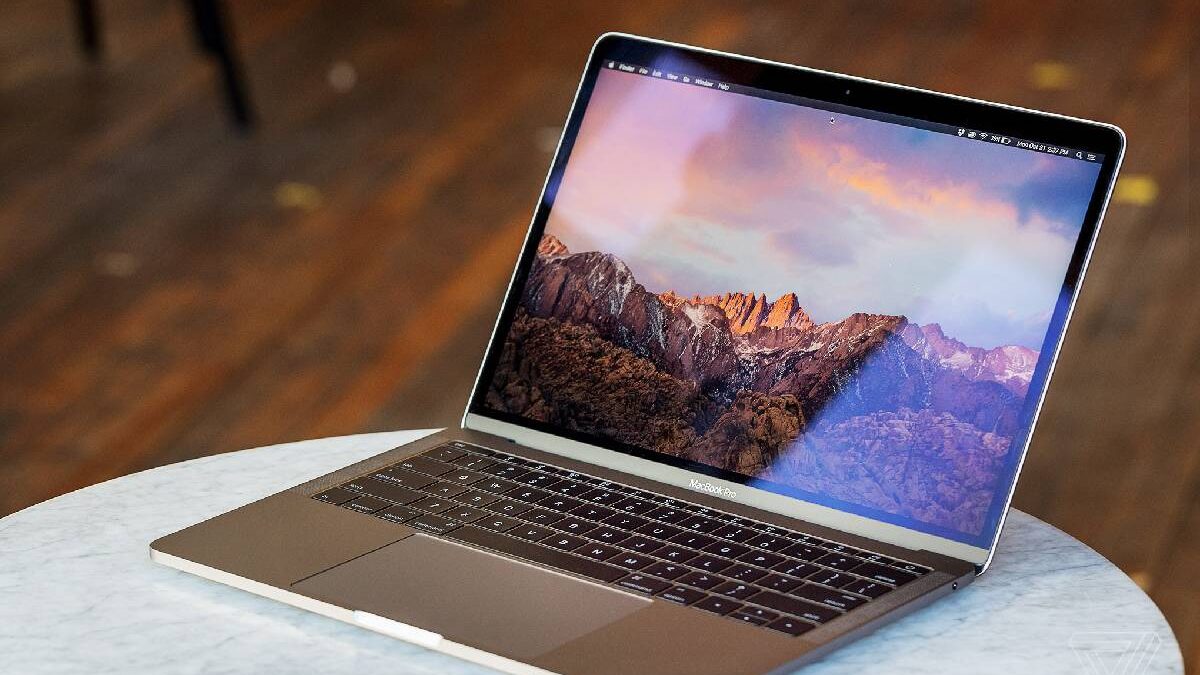Table of Contents
MacBook Pro Review
The 13-inch MacBook Pro review. But you might not see much of a difference – the 2020 model sticks to the already established design format.
The anticipated 14-inch rework, which was mainly expecting, echoed the larger-scale 16-inch version (which saw the end of the 15-inch model).
Has Apple changed the design of the MacBook Pro?
- 2x (or 4x) USB-C / Thunderbolt 3 ports, 1x 3.5mm jack
- Available in Space Gray and Silver finishes
- 15.6mm thick, 1.4kg weight
- Touch Bar display as standard
- Touch ID sensor for login
The MacBook Pro’s design is iconic, so we’re not surprised to see minimal changes to the 2020 model:
- That means there is no screen bezel reduction, no additional login methods; there’s a Touch ID fingerprint sensor present (which is excellent).
- But there’s no Face ID camera layout yet, and no changes to the ports or the built-in camera. (The 720p resolution here is shallow by today’s standards.)
- Touch ID is present to add an extra layer of security. It can be used to unlock the laptop and prevent saved passwords from automatically loading into web forms.
- It’s the kind of feature that you might not think you’d need often, but after having used it for a while, it’s the first thing we miss when we go back to our old MacBook Air.
- However, if you are a user of the iPhone XS or using the iPad Pro, you probably can not help but wonder why one cannot have Face ID in place; after all, this is the Pro line.
How is the screen of the new MacBook Pro?
- 13.3-inch Retina display (2650 x 1600 resolution)
- Proper Tone technology for adaptive colors
- 500 nits maximum brightness
Like the design, the Pro’s display remains the same for 2020 as well. But that’s good news, given the various positives we can take away from this panel:
- Color reproduction is genuinely fantastic, thanks to its compatibility with the wide P3 color gamut.
- It’s brilliant too, with a 500 nits max output. Not that it is flashy, but there is a very pronounced differentiation between lights and shadows.
- As with previous models, as seen on the iPhone and iPad, which automatically adjusts the color balance to match the surrounding lighting environment, providing a more comfortable viewing.
- Not that I know it’s happening, things look great at all times. Creatives who need precise color standards can quickly turn it off if necessary.
- We think the MacBook Pro screen is everything it should be
Is MacBook Pro having keyboard issues?
- Backlit magic keyboard (new type, not butterfly mechanism)
- Large trackpad with Force Touch (dual-level control)
So what about the keyboard? You’ve probably heard people grumble in the past about unfortunate experiences with Apple’s “Butterfly” mechanism:
- Well, that’s not on the MacBook Pro anymore. For 2020, it’s all about the “Magic” keyboard, as it was pulled straight from the 16-inch MacBook Pro.
- This keyboard also works its magic. It eliminates any presence of accidental double presses, prevents the keys from sticking while offering.
- A feeling of more excellent feedback thanks to a more significant journey of the keys than in some past experiences (the now-defunct MacBook is the best example ).
- Including a physical escape, the key may not seem all that important, but if something went wrong with the touch bar or the ESC key was not set to display, it ensures you always have access.
How long does the MacBook Pro last?
- 58.2 Wh polymer lithium battery, 61 W USB-C power adapter
- 8th and 10th generation Intel Core I processor options
- Entry-Level 8th Gen 1.4GHz Quad-Core Core i5
- Intel Iris Plus 645 Graphics
- 2.3GHz quad-core 10th Gen Core i7 at the higher end
- Intel Iris Plus Graphics
- 8GB / 16GB RAM as standard (32GB configurable)
- 256GB SSD (512GB / 1TB / 2TB configurable)
As is typical of year-over-year product updates, the 2020 MacBook Pro offers more power under the hood than its predecessor:
- Well, it can. It depends on the model you choose. The entry-level uses the same 8th Gen Intel Core i5 processor as the 2019 model.
- It’s when you ups the ante and opts for the four USB-C / Thunderbolt ports that open the door to 10th Intel Core I processors. Generation.
- We’re reviewing the top-of-the-line model for a 2.0GHz quad-core 10th Gen Intel Core i5 (3.8GHz with Turbo Boost).
- That power should give creatives from all walks of life plenty of headroom, whether it’s editing videos, photos, music, or even just playing games.
- A 2.3GHz 10th Gen Intel Core i7 (4.1GHz Turbo Boost) option can be configuring if you want even more.
- Still, it will cost you a couple hundred more, and the likely additional impact on battery life will be questionable.
- However, the 4TB option means adding an extra four figures to the asking price, so you might want to consider using portable drives to keep excess files going.

